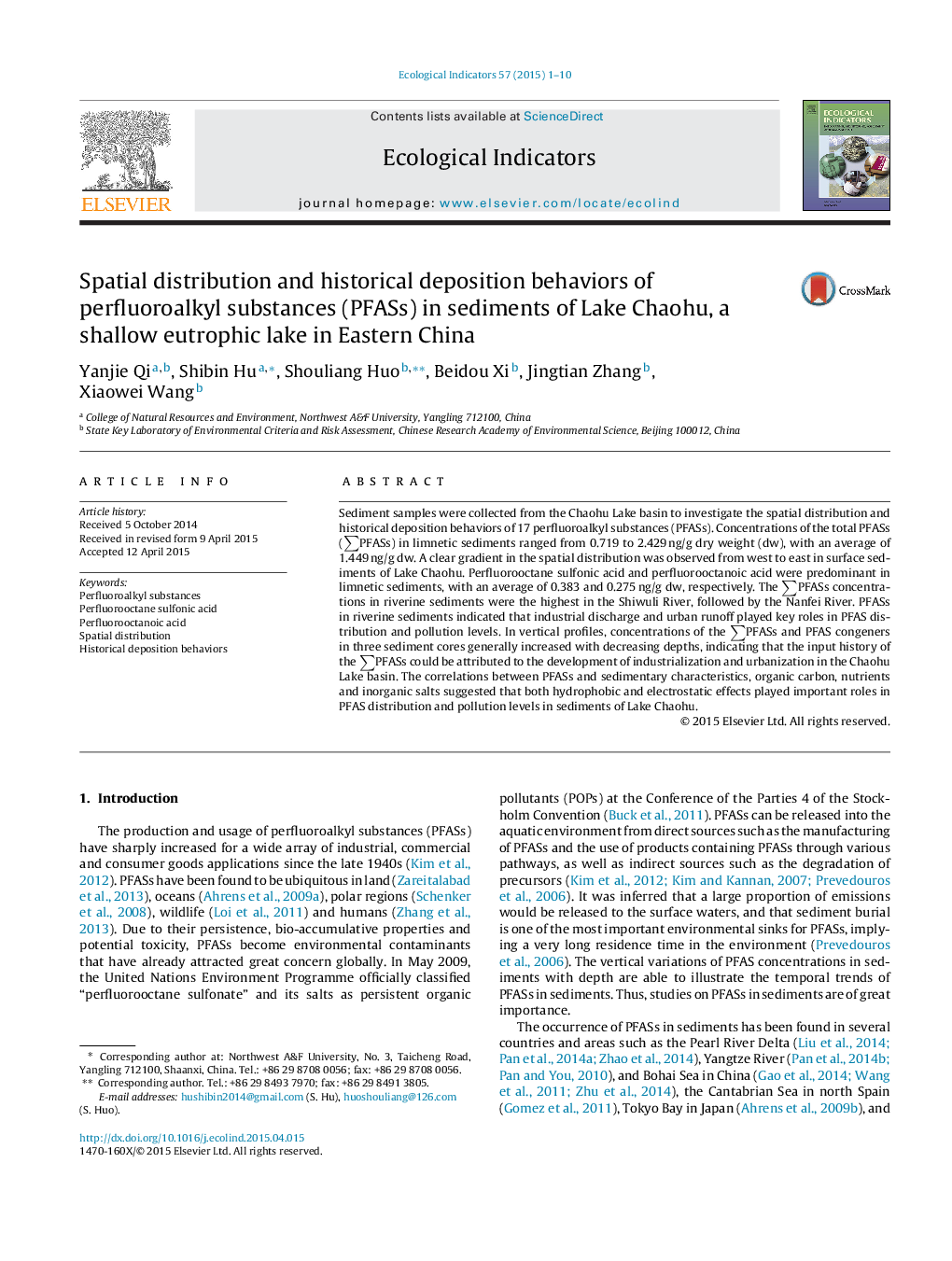| Article ID | Journal | Published Year | Pages | File Type |
|---|---|---|---|---|
| 6294621 | Ecological Indicators | 2015 | 10 Pages |
Abstract
Sediment samples were collected from the Chaohu Lake basin to investigate the spatial distribution and historical deposition behaviors of 17 perfluoroalkyl substances (PFASs). Concentrations of the total PFASs (âPFASs) in limnetic sediments ranged from 0.719 to 2.429Â ng/g dry weight (dw), with an average of 1.449Â ng/g dw. A clear gradient in the spatial distribution was observed from west to east in surface sediments of Lake Chaohu. Perfluorooctane sulfonic acid and perfluorooctanoic acid were predominant in limnetic sediments, with an average of 0.383 and 0.275Â ng/g dw, respectively. The âPFASs concentrations in riverine sediments were the highest in the Shiwuli River, followed by the Nanfei River. PFASs in riverine sediments indicated that industrial discharge and urban runoff played key roles in PFAS distribution and pollution levels. In vertical profiles, concentrations of the âPFASs and PFAS congeners in three sediment cores generally increased with decreasing depths, indicating that the input history of the âPFASs could be attributed to the development of industrialization and urbanization in the Chaohu Lake basin. The correlations between PFASs and sedimentary characteristics, organic carbon, nutrients and inorganic salts suggested that both hydrophobic and electrostatic effects played important roles in PFAS distribution and pollution levels in sediments of Lake Chaohu.
Keywords
Related Topics
Life Sciences
Agricultural and Biological Sciences
Ecology, Evolution, Behavior and Systematics
Authors
Yanjie Qi, Shibin Hu, Shouliang Huo, Beidou Xi, Jingtian Zhang, Xiaowei Wang,
